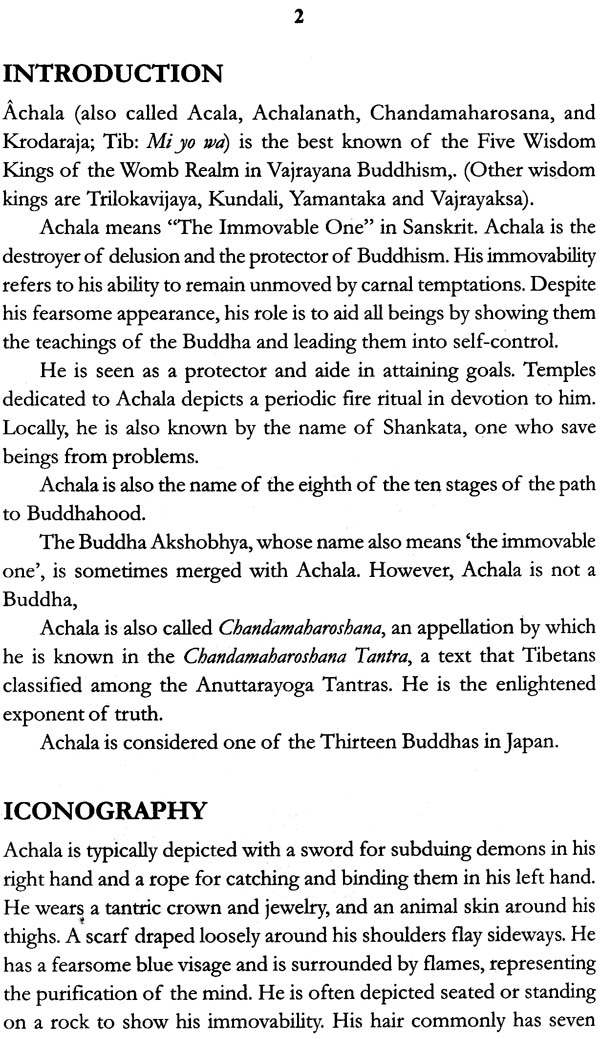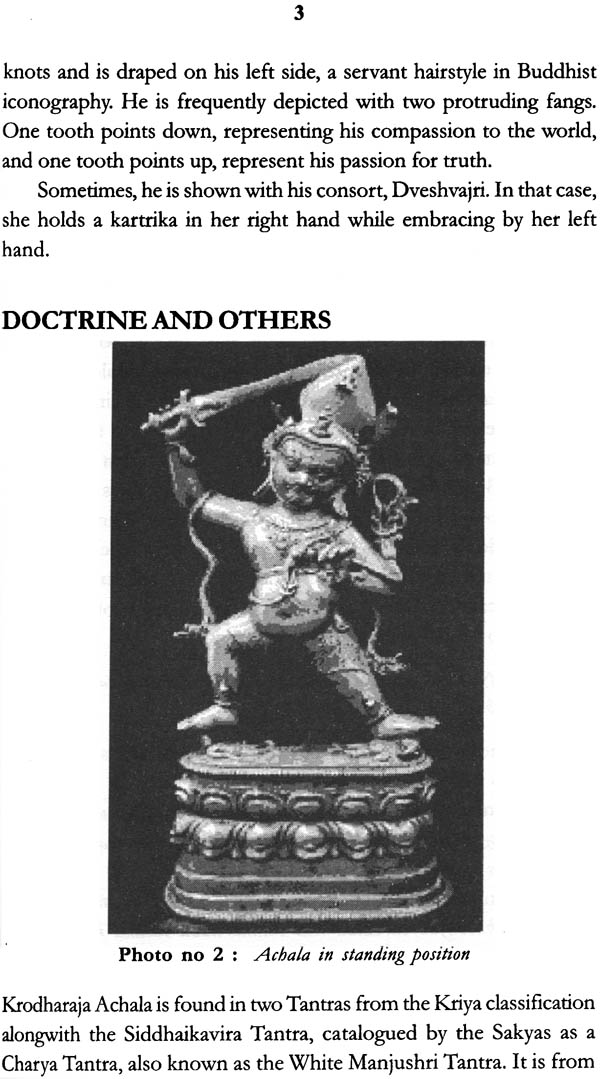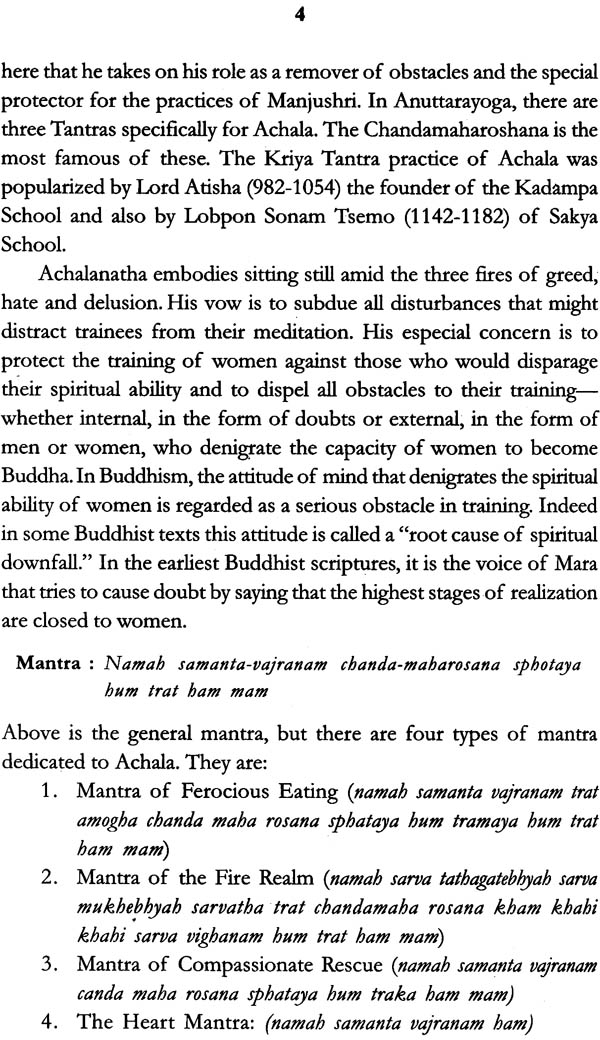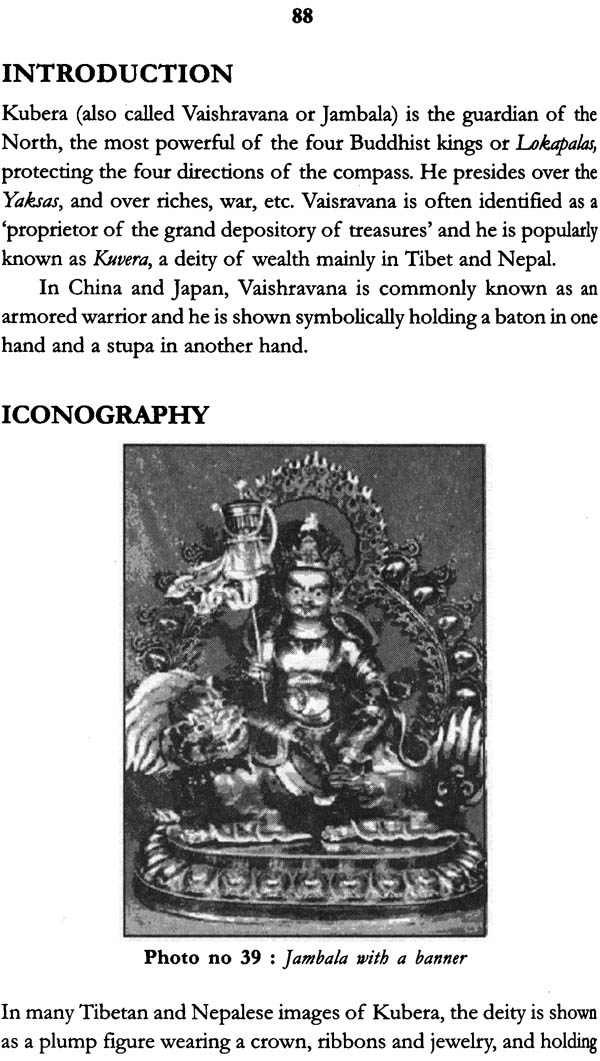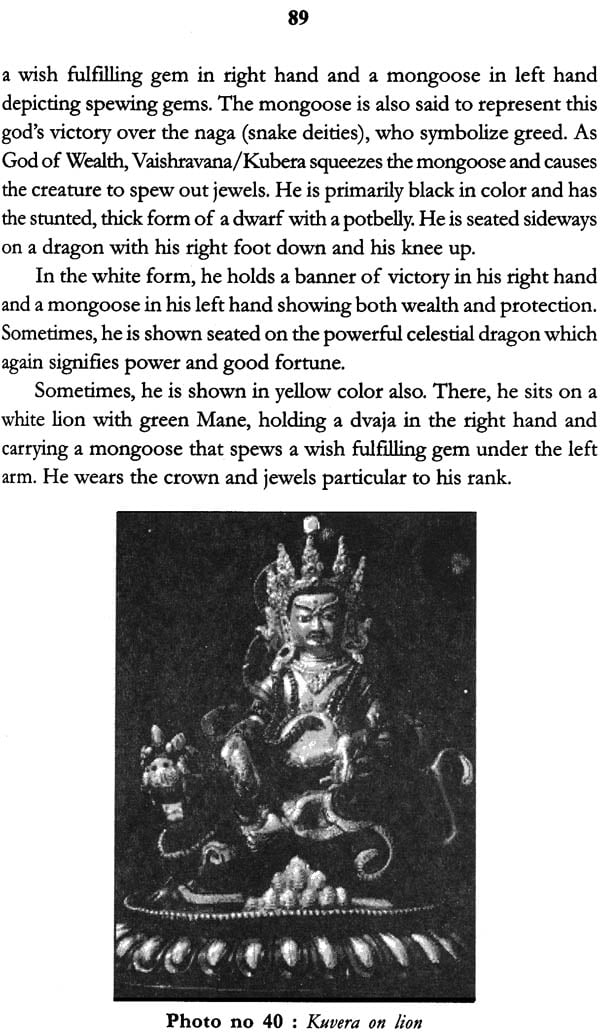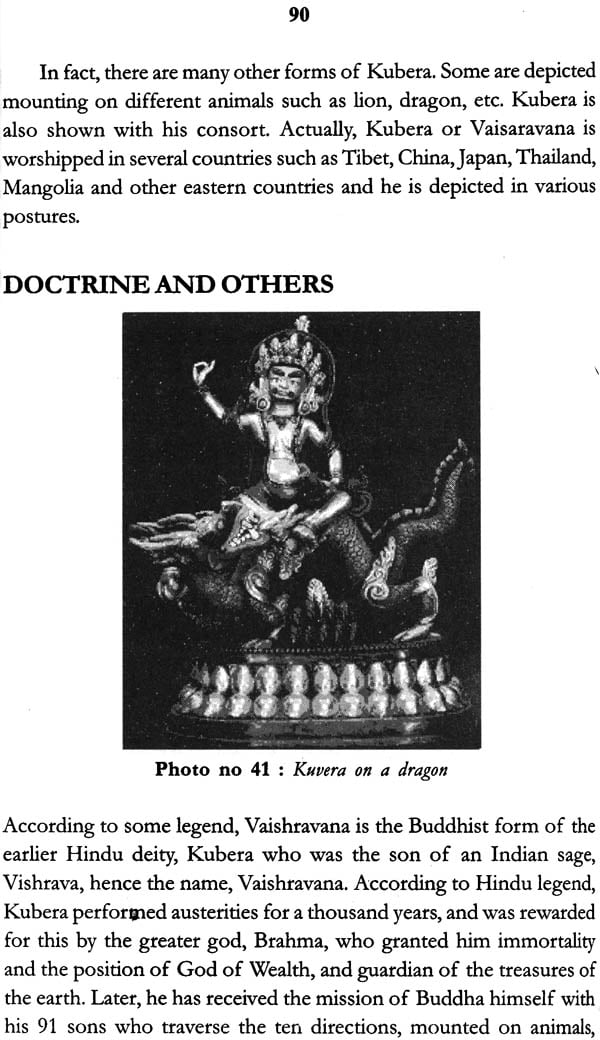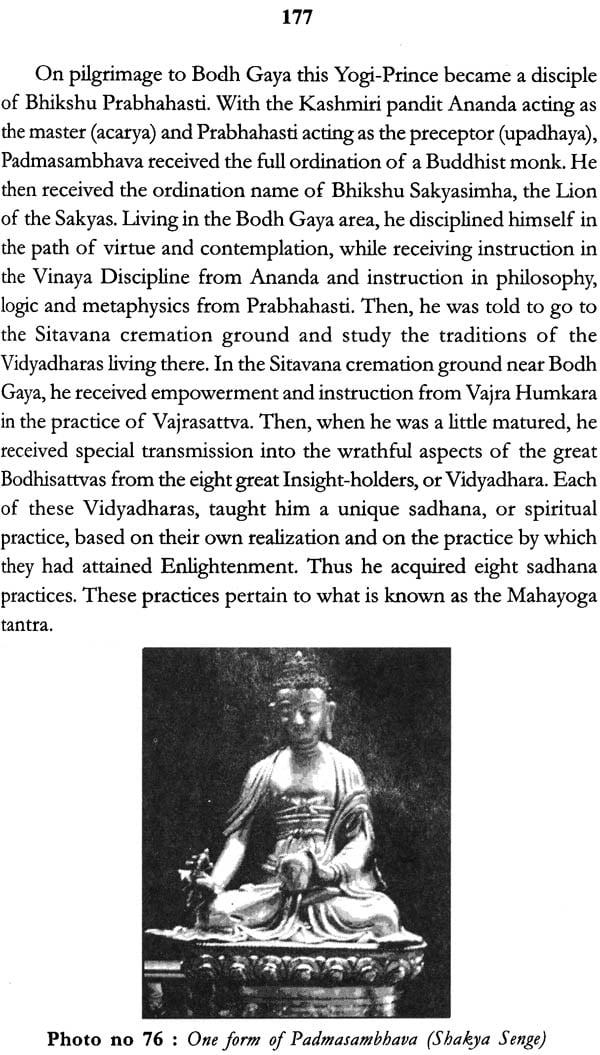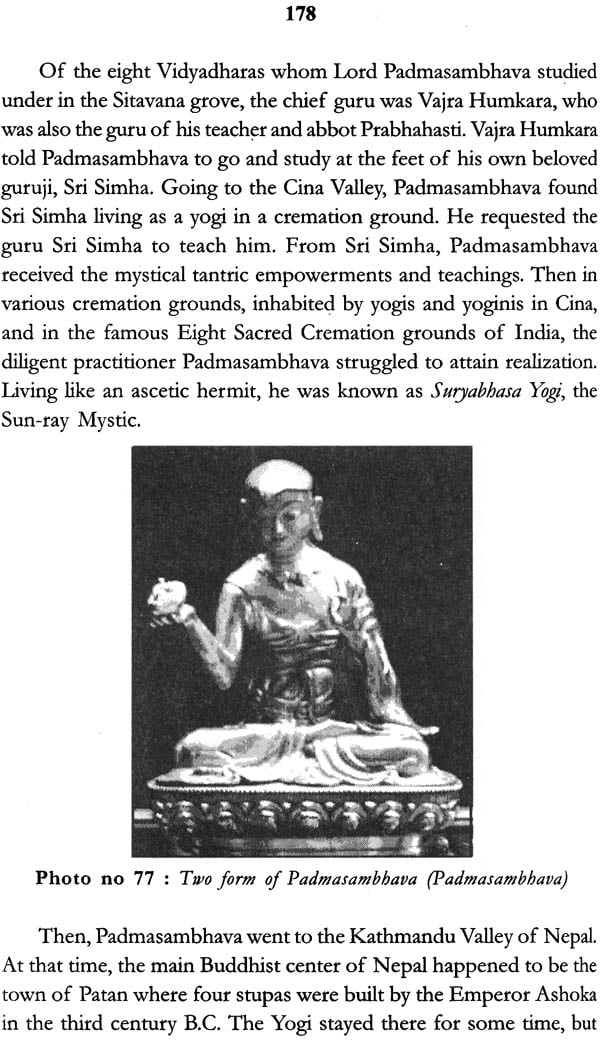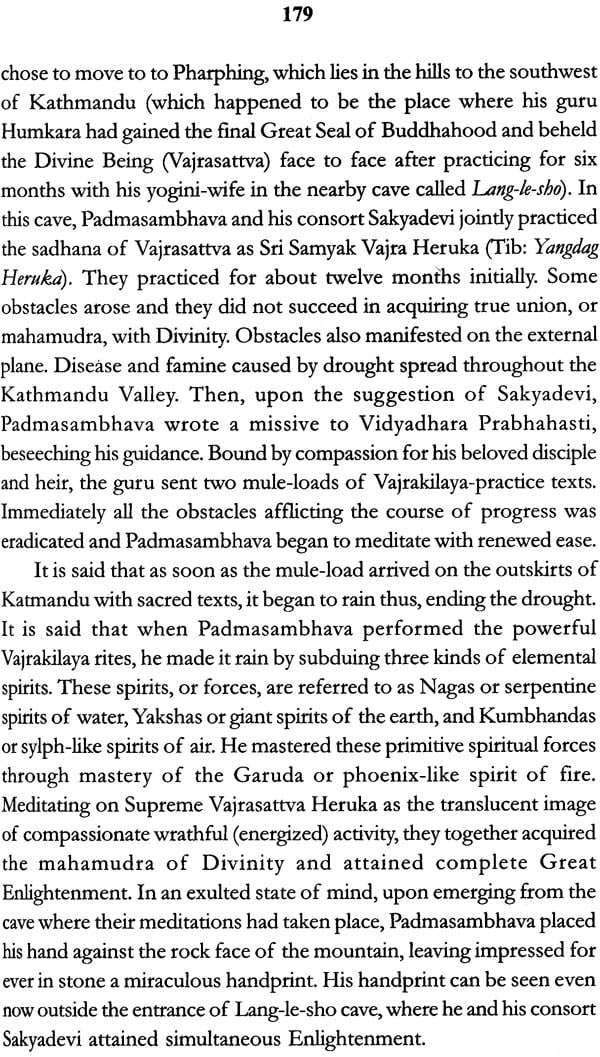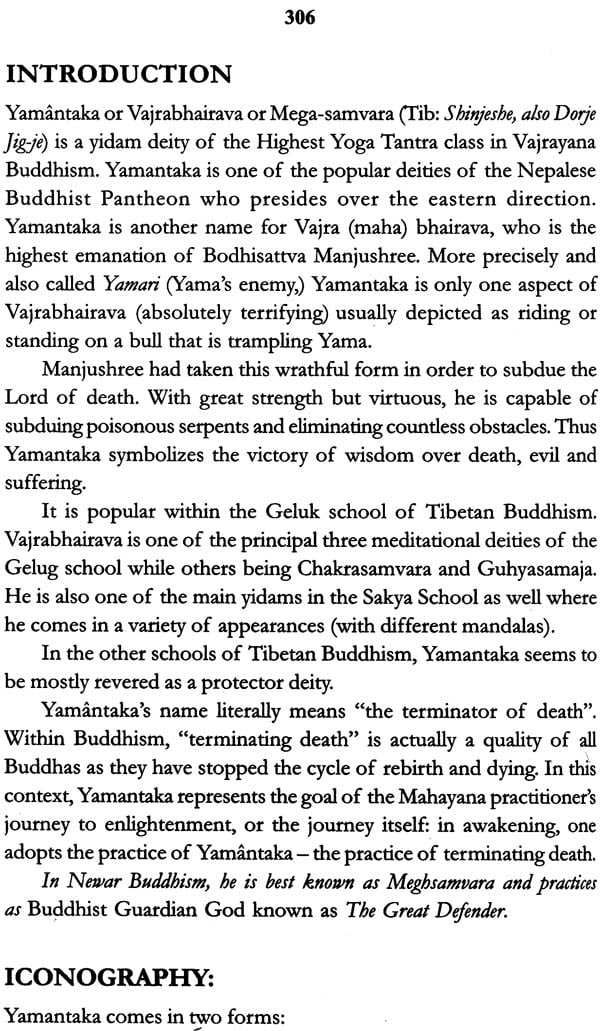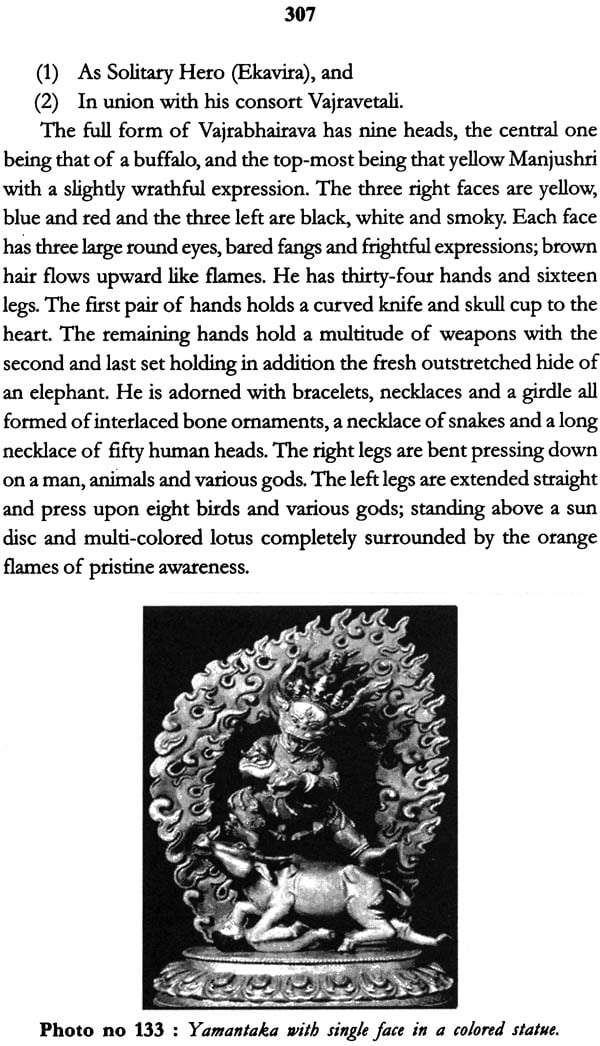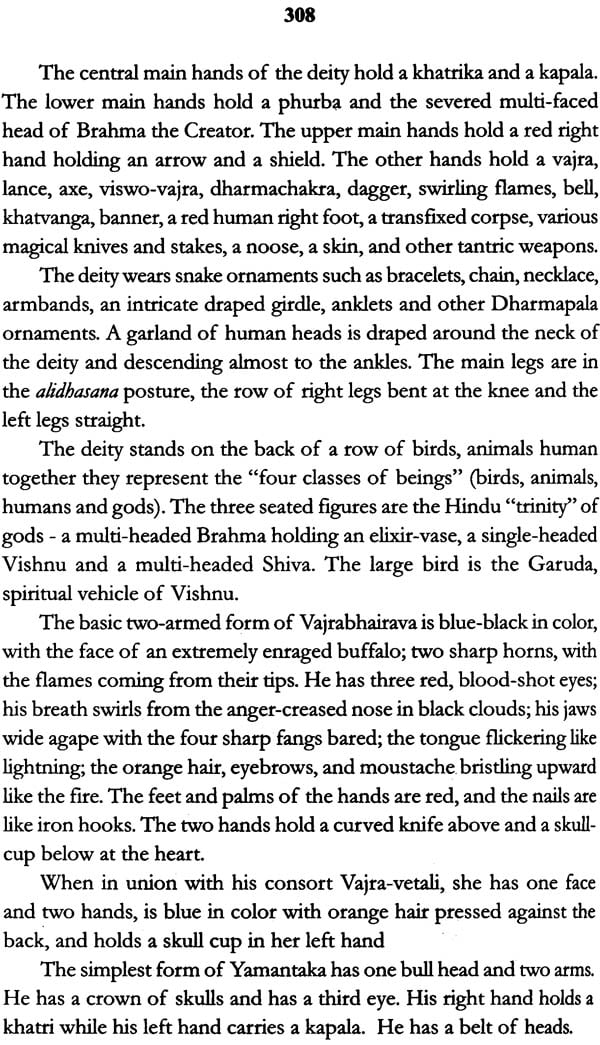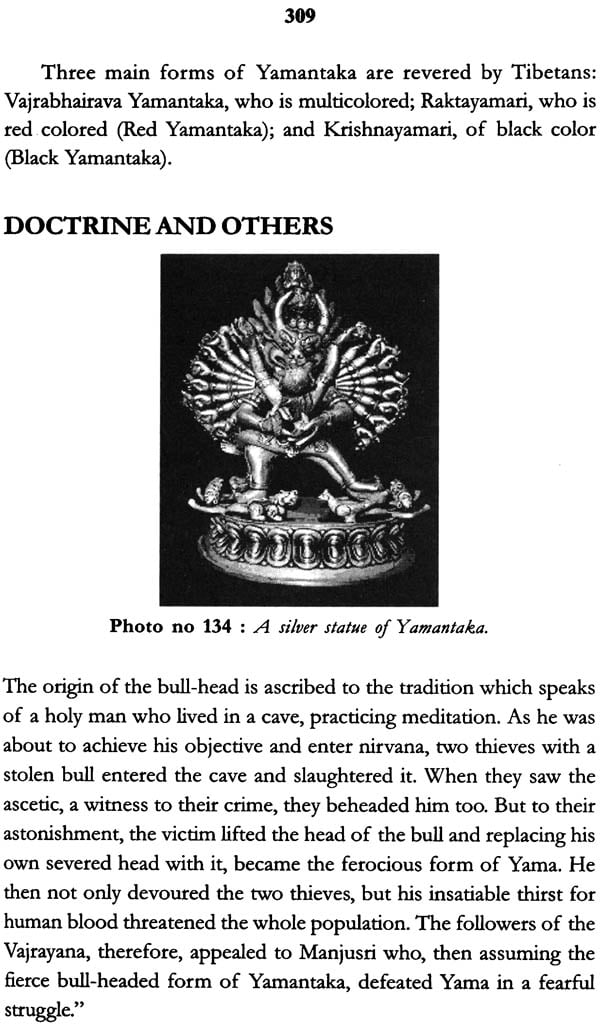
Buddhist Deities & Masters (An Introduction)
Book Specification
| Item Code: | NAM012 |
| Author: | Chandra B Sakya |
| Publisher: | Adarsh Books |
| Language: | English |
| Edition: | 2009 |
| ISBN: | 9788183630719 |
| Pages: | 368 (136 B/W Illustrations) |
| Cover: | Paperback |
| Other Details | 8.5 inch x 5.5 inch |
| Weight | 410 gm |
Book Description
Mr. Chandra B Shakya was born in a Newar family of Lalitpur, Nepal. Nurtured within re-ligious and cultural back-ground of a mix of different Buddhism practices, Mr Shakya has always been curious to have better understanding of the different deities and masters relating to Mahayana Buddhism. Amidst the traditional and rich atmosphere of statues making and selling business especially in Lalitpur itself, he sensed a dearth of information in this aspect. Although, a water resource engineer by profession, he happened to devote his time and efforts in collecting information and studying about different deities and masters. There are so many different kinds of deities that one is bound to get fascinated and bewildered at times. Through this book, Mr. Shakya has tried to cater to the readers some very pertinent and concise information about the most popular Mahayana Buddhist deities and masters whose statues are being made. This book should be useful to many readers in terms of arousing curiosity as well as generating deeper interest to further the knowledge in Mahayana Buddhism and also instigate a desire to follow the path of enlightenment ultimately in whatever form, the Tathagata Sakyamuni Buddha had shown, in a way suitable to individual’s preference.
It is needless here to mention about the popularity of Nepalese arts and crafts in the world. Among various craftworks, metal statues have their specific importance due to several reasons. Since long time ago, Nepal had been a site for renowned Buddhist/Spiritual Masters to practice meditation and dharma teaching, Nepali artisans had gone to far off countries like China, Mongolia, Tibet, Bhutan, etc., to create masterpieces of craftworks, even in those days. Princess Bhrikuti had taken Nepali artisans with her to work in constructing monasteries and statues in Tibet, way back in 7th century. Later, Guru Rinpoche had taken Nepali artisans to Tibet to work at Samye Monastery. During 12th century, Balbahu (Arniko) had gone to China to make temples at the invitation of the Emperor Kublai Khan. Guru Shandrung Ngawang Namgyal of Bhutan also took Nepali artisans to construct several fortresses and monasteries there in 16th century. Within Nepal also, especially in Newar community, the practice of Mahayana Buddhism along with involvement of people in arts and crafts relating to the same as their ways of livelihoods have had been greatly instrumental in flourishing such fine craftsmanship that we see today.
Actually, the casting of bronze, brass and copper statues in Nepal dates back to the 13th century. Usually, a lost wax method is followed for casting different deities. Apart from the activity of casting, there are series of works that need to be done to prepare a completed piece of statue such as engraving, gold plating, face painting, etc. Improved modes and techniques have evolved lately in making a beautiful and durable statue. With the spread of Mahayana Buddhism in various parts of the world, including the West, there have been increased demands of Buddhist statues. Today, we find many buyers coming from different parts of the world mostly from Asian countries. However, Tibetan masters and practitioners constitute the main job givers to these hardworking, laborious artisans of Nepal. With the arrival of Buddhist masters and practitioners from different sects of Mahayana Buddhism, the artisans are exposed to additional array of Buddhist deities. Consequently, newer and better statues can be seen in the statue shops around Kathmandu and Patan especially. Because of the multitude f varieties of such deities and Buddhist masters’ statues, it is natural that people get bewildered and sometimes confused as to which deity represents what activity or essence.
Mahayana Buddhist pantheons have so many deities, that too belonging to different sects; it would be a very difficult task if not impossible, to list them out. Let the readers be reminded here that this book deals with those Buddhist deities and Masters, whose metal statues are being made by Nepalese artisans and which are comparatively popular. Endeavour is made hare to present a general introduction, iconographic details and related doctrine about the respective deity. In case of Masters, a brief history with the mention of specific mastery and contribution is presented in this book. Considering the vastness and complexity of the subject, the readers would be considerate towards the writer in case there happens to be any flaws or mistakes of any kind.
Thanks are due to statue business houses and artisans for providing access to photographing some statues. Acknowledgements are also due to some web sites from where the photographs have been drawn.
| Preface | xiii | |
| History of Metal Statue Making in Nepal | xv | |
| Actual making of a Statue | xix | |
| 1 | Achala (Chandamaharosana) | 1 |
| 2 | Akshobhya Buddha | 6 |
| 3 | Amitabha Buddha | 10 |
| 4 | Amoghapasa Lokeshvara | 15 |
| 5 | Amoghasiddhi | 19 |
| 6 | Aparmita | 22 |
| 7 | Atisha | 25 |
| 8 | Avalokiteshvara | 30 |
| 9 | Chakrasamvara | 35 |
| 10 | Chundi | 40 |
| 11 | Dhritarashtra | 45 |
| 12 | Dipankara Buddha | 48 |
| 13 | Dorje Drollo | 52 |
| 14 | Dorje Legpa | 56 |
| 15 | Ekajati | 59 |
| 16 | Gampopa | 63 |
| 17 | Green Tara | 67 |
| 18 | Guhyasamaja | 71 |
| 19 | Harihariharivahan Lokeshvara | 74 |
| 20 | Hayagriva | 77 |
| 21 | Hevajra | 82 |
| 22 | Kubera | 87 |
| 23 | Kalachakra | 93 |
| 24 | Karma Pakshi | 100 |
| 25 | Kurukula | 105 |
| 26 | Mahakala | 112 |
| 27 | Mahapratisara | 119 |
| 28 | Maitreya Buddha | 123 |
| 29 | Mandarava | 127 |
| 30 | Manjushree | 131 |
| 31 | Marichi | 136 |
| 32 | Marpa Lotsawa | 140 |
| 33 | Medicine Buddha (Bhaisajyaguru) | 145 |
| 34 | Milarepa | 148 |
| 35 | Nagarjuna | 152 |
| 36 | Nairatma | 158 |
| 37 | Namgyalma (Ushnishavijaya) | 162 |
| 38 | Namsangiti Manjushree | 165 |
| 39 | Naropa | 168 |
| 40 | Padmapani Lokeshvara | 172 |
| 41 | Padmasambhava | 175 |
| 42 | Palden Lhamo | 190 |
| 43 | Prajnaparamita | 195 |
| 44 | Rahula | 199 |
| 45 | Rangjung Rigpe Dorje (16th Karmapa) | 203 |
| 46 | Ratnasambhava Buddha | 209 |
| 47 | Sakya Pandita | 212 |
| 48 | Sakyamuni Gautama Buddha | 216 |
| 49 | Samantabhadra | 222 |
| 50 | Simhamukha | 225 |
| 51 | Shabdrung Ngawang Namgyal | 229 |
| 52 | Thousand-armed Avalokiteshvara (Sahastrabhuja Lokeshvara) | 234 |
| 53 | Tilopa | 237 |
| 54 | Je Tsongkhapa | 243 |
| 55 | Twenty-one Taras | 248 |
| 56 | Ushnisha-Sitatapatra | 256 |
| 57 | Vairocana | 259 |
| 58 | Vajradhara | 263 |
| 59 | Vajrakila | 268 |
| 60 | Vajrapani | 273 |
| 61 | Vajrasattva | 278 |
| 62 | Vajravarahi | 283 |
| 63 | Vajrayogini | 286 |
| 64 | Vasudhara | 291 |
| 65 | Virudhaka | 294 |
| 66 | Virupaksha | 297 |
| 67 | White Tara (Saptalocana) | 300 |
| 68 | Yamantaka (Vajrabhairava, Meghsamvara) | 305 |
| 69 | Yeshe Tsogyal | 312 |
| References | 317 | |
| Sanskrit Words and Glossary | 325 | |
| Tibetan Names | 335 | |
| Alternative Names of the Same Deity or Master | 337 | |
| Indexes | 339 |
